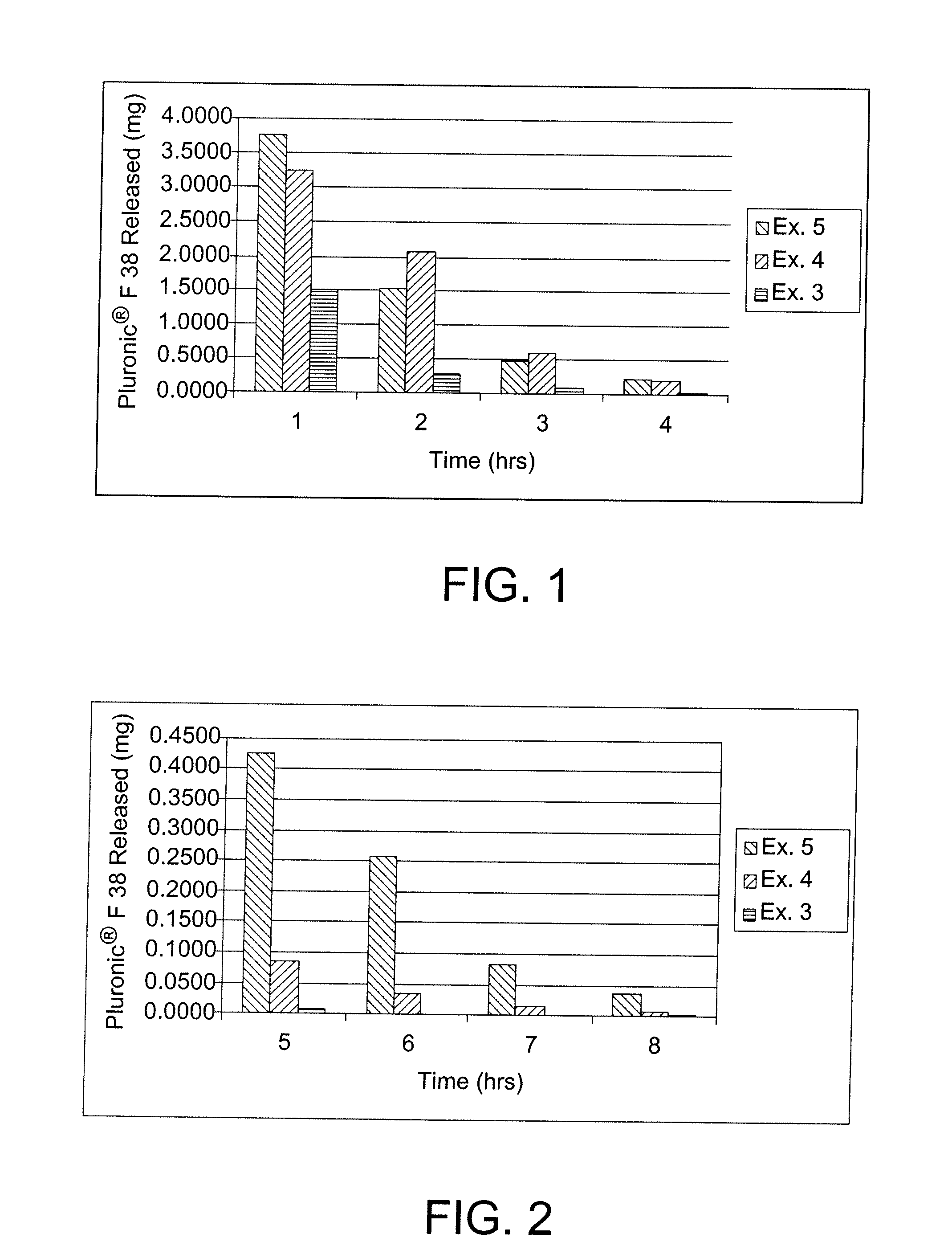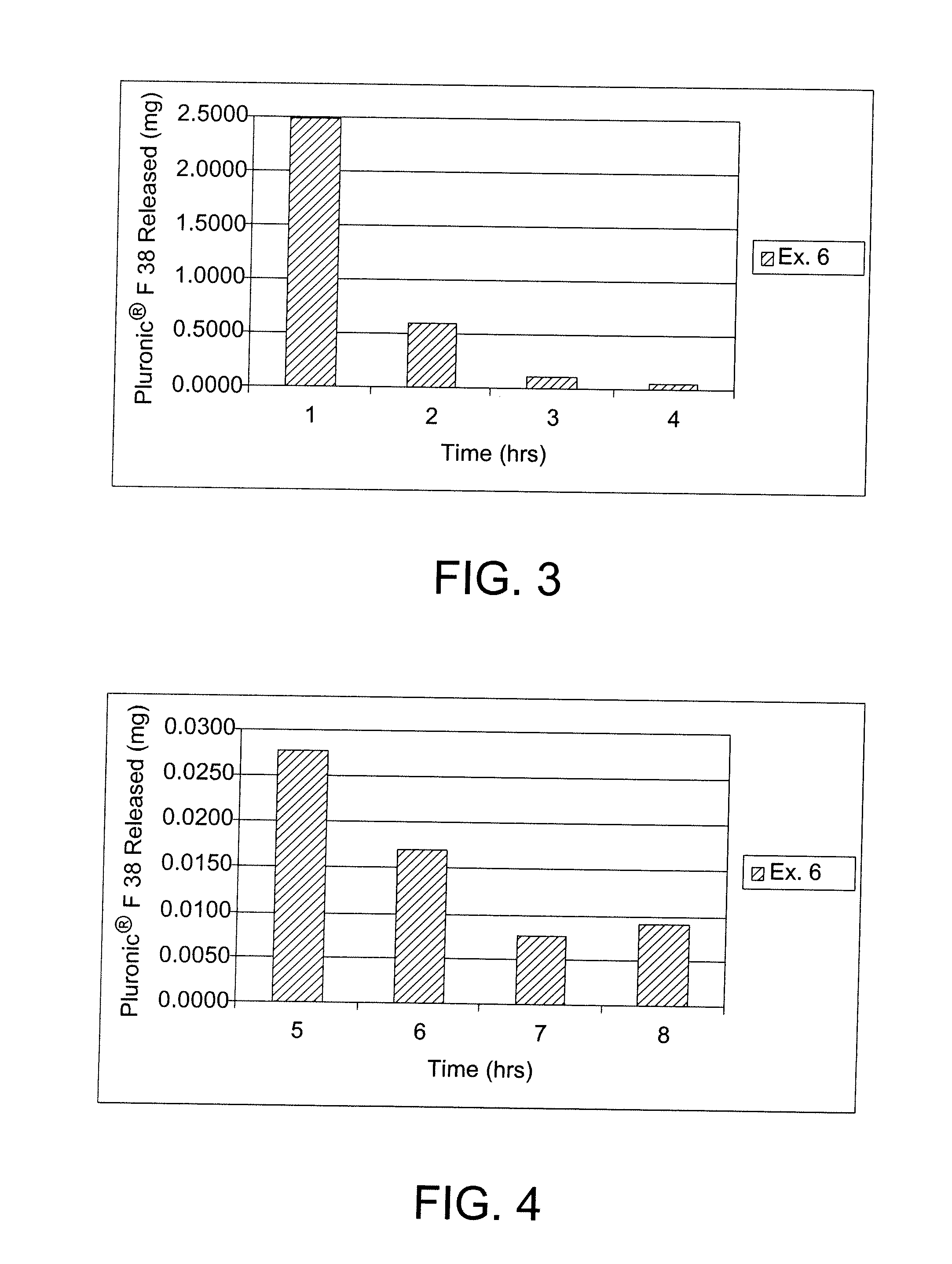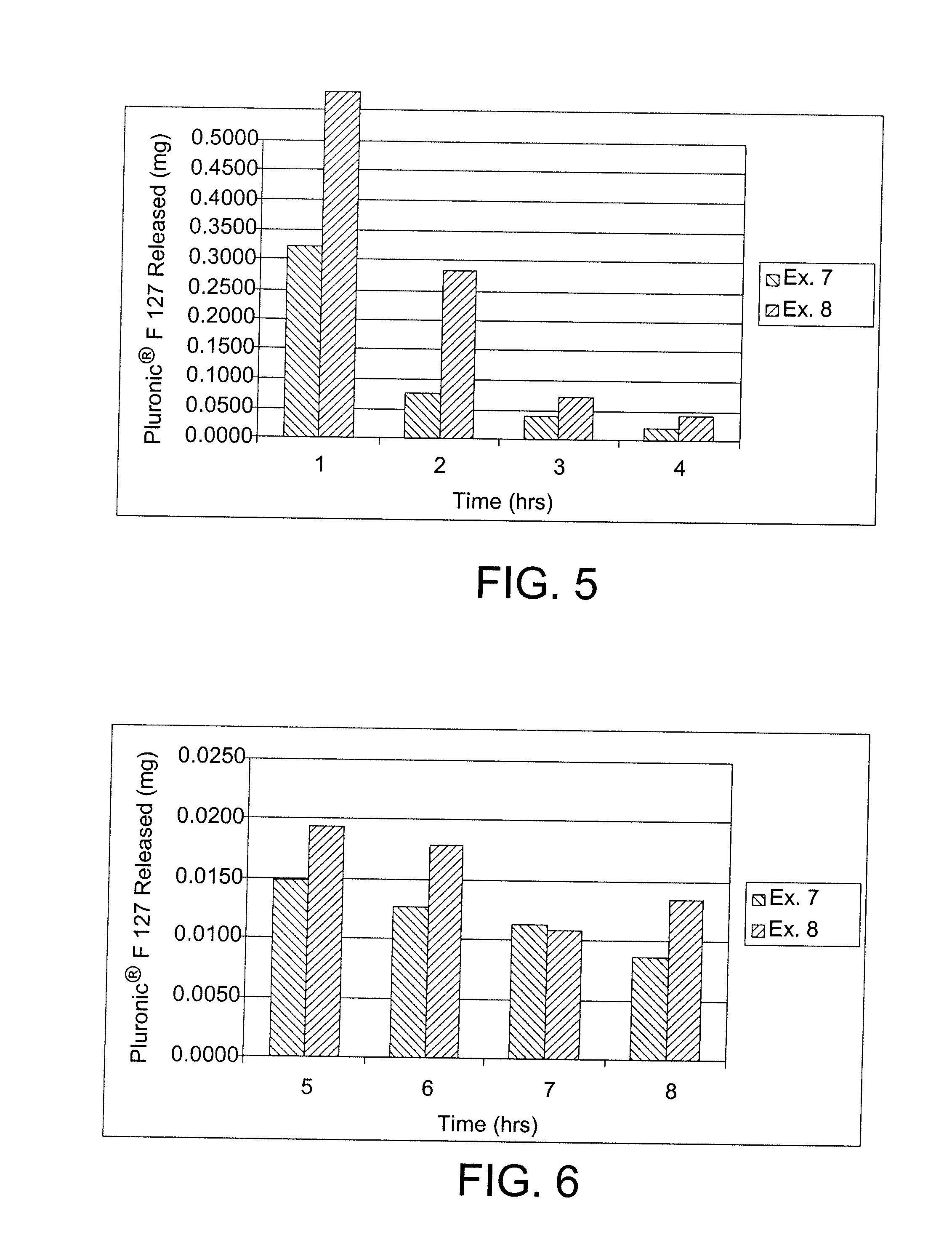Method For The Mitigation of Symptoms of Dry Eye
- Summary
- Abstract
- Description
- Claims
- Application Information
AI Technical Summary
Benefits of technology
Problems solved by technology
Method used
Image
Examples
example 1
[0088]Preparation of an End Terminal Functionalized Surfactant.
[0089]Pluronic® F127 (6.00 g) was placed in a round bottom flask and dried thoroughly via azeotropic distillation of toluene (100 ml). The round bottom flask was then fitted with a reflux condenser and the reaction was blanketed with nitrogen gas. Anhydrous tetrahydrofuran (THF) (60 ml) was added to the flask and the reaction was chilled to 5° C. with 15 equivalents (based upon the hydroxyl endgroups) of triethylamine (TEA) (2.0 ml) was added. Methacryoyl chloride (1.4 ml) (15 equivalents) was dropped into the reaction mixture through an addition funnel and the reaction mixture was allowed to warm to room temperature and then stirred overnight. The reaction mixture was then heated to 65° C. for 3 hours. Precipitated salt (TEA-HCl) was filtered from the reaction mixture and the filtrate was concentrated to a volume of around 355 mL and precipitated into cold heptane. Two further reprecipitations were performed to reduce t...
example 2
[0090]Preparation of an End Terminal Functionalized Surfactant.
[0091]Pluronic® F38 (10.00 g; 2.13E-03 mol) was placed in a round bottom flask and dried thoroughly via azeotropic distillation of toluene and then dissolved in 100 mL of THF. 10 equivalents of solid NaH were added into the flask (0.51 g; 2.13E-02 mol). Next, epichlorohydrin (1.67 mL; 2.13E-03 mol) was added to the reaction mixture and mixed well. The reaction mixture was heated to reflux for 24 hours and then cooled. A scoop of magnesium sulfate and silica gel was added to the reaction mixture to remove any water, mixed well for 5 minutes and then filtered off the insolubles. The filtrate was concentrated to around 30 mL final volume and the product was precipitated into heptane and isolated by filtration. NMR confirms the presence of epoxide groups on the termini of the polymer.
example 3
[0092]A monomer mixture was prepared by mixing the following components, N-vinyl-2-pyrrolidone (NVP) (90 weight percent); 4-t-butyl-2-hydroxycyclohexyl methacrylate (TBE) (10 weight percent), Pluronics® F127 dimethacrylate (DM) (HLB=22, Mw˜12600) (5 weight percent), ethylene glycol dimethacrylate (EGDMA) (0.3 weight percent) and a Vazo 64 initiator (0.5 weight percent). The monomeric mixture was cast in a polypropylene contact lens mold and thermally cured for about 4 hours. The resulting contact lens had an equilibrium water content (EWC) of approximately 82%, as calculated from the following equation:
((Wetweight(mg)-Dryweight(mg))Wetweight(mg))×100
[0093]The untreated contact lens thus obtained was immersed into a 5% solution of Pluronic® F38 (HLB=31, Mw˜4700) in water in a polypropylene lens case for a period of at least 18 hours. The lens was removed from the solution and deuterium oxide (D2O) was dripped over the surface of the lens at a rate of 1 mL / hour. At the conclusion of e...
PUM
| Property | Measurement | Unit |
|---|---|---|
| Percent by mass | aaaaa | aaaaa |
| Percent by mass | aaaaa | aaaaa |
| Percent by mass | aaaaa | aaaaa |
Abstract
Description
Claims
Application Information
 Login to View More
Login to View More - R&D
- Intellectual Property
- Life Sciences
- Materials
- Tech Scout
- Unparalleled Data Quality
- Higher Quality Content
- 60% Fewer Hallucinations
Browse by: Latest US Patents, China's latest patents, Technical Efficacy Thesaurus, Application Domain, Technology Topic, Popular Technical Reports.
© 2025 PatSnap. All rights reserved.Legal|Privacy policy|Modern Slavery Act Transparency Statement|Sitemap|About US| Contact US: help@patsnap.com



